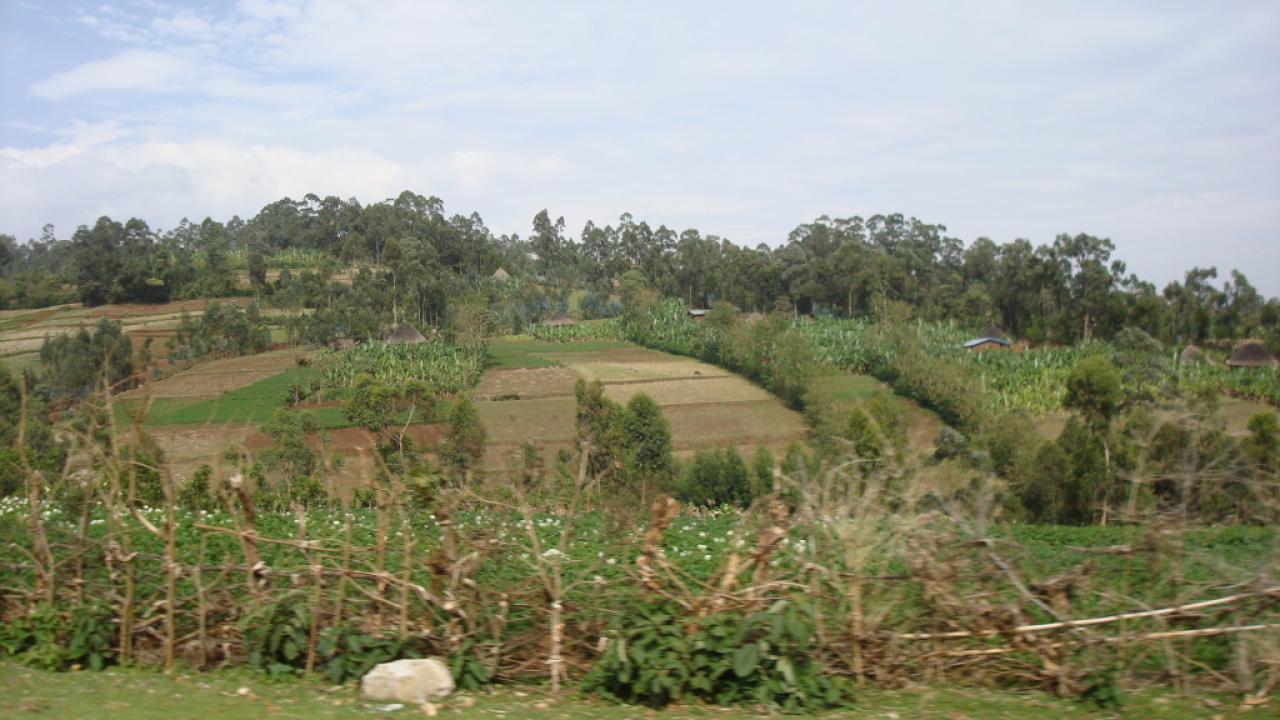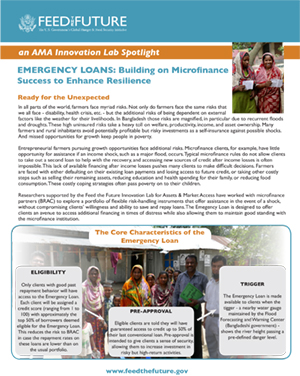
In all parts of the world, farmers face myriad risks. Not only do farmers face the same risks that we all face - disability, health crisis, etc. - but the additional risks of being dependent on external factors like the weather for their livelihoods. In Bangladesh those risks are magnified, in particular due to recurrent floods and droughts.
 These high uninsured risks take a heavy toll on welfare, productivity, income, and asset ownership. Many farmers and rural inhabitants avoid potentially profitable but risky investments as a self-insurance against possible shocks. Missed opportunities for growth keep people in poverty.
These high uninsured risks take a heavy toll on welfare, productivity, income, and asset ownership. Many farmers and rural inhabitants avoid potentially profitable but risky investments as a self-insurance against possible shocks. Missed opportunities for growth keep people in poverty.
Entrepreneurial farmers pursuing growth opportunities face additional risks. Microfinance clients, for example, have little opportunity for assistance if an income shock, such as a major flood, occurs. Typical microfinance rules do not allow clients to take out a second loan to help with the recovery, and accessing new sources of credit after income losses is often impossible.
This lack of available financing after income losses pushes many clients to make difficult decisions. Farmers are faced with either defaulting on their existing loan payments and losing access to future credit, or taking other costly steps such as selling their remaining assets, reducing education and health spending for their family, or reducing food consumption. These costly coping strategies often pass poverty on to their children.
Researchers supported by the Feed the Future Innovation Lab for Assets & Market Access have worked with microfinance partners (BRAC) to explore a portfolio of flexible risk-handling instruments that offer assistance in the event of a shock, without compromising clients’ willingness and ability to save and repay loans. The Emegency Loan is designed to offer clients an avenue to access additional financing in times of distress while also allowing them to maintain good standing with the microfinance institution.
A Promising Opportunity
Other financial innovations for risk management, including index-based insurance, have been explored in a number of contexts, but have proved difficult to promote among farmers due to incomplete coverage of risk, high cost due to insurance company loadings, lack of trust in insurance providers, and a lack of willingness to insure.
By adapting traditional financial products delivered by microfinance institutions, and making them more flexible to meet the needs of farmers and rural inhabitants, many of these challenges faced by index insurance can be overcome.
The Research Study
The new financial innovations described above will be evaluated using a randomized control trial. The broader research project will combine these risk-handling financial innovations with risk-reducing technological innovations (specifically, new rice varieties), to create a portfolio of tools to manage and cope with risk.
On May 1st, 2016 a credit score was generated for the clients from the 200 BRAC branches participating in the study. In 100 treatment branches the eligible clients were contacted and given a referral slip that describes the details of the loan and the concept of pre-approval. The FFWC website is now being monitored daily and when one of the monitors linked to a treatment branch shows flooding, the BRAC branch management will contact eligible clients letting them know that their guaranteed loans are available should they want them.
Researcher Observations
In the pilot run last summer, the research team found that the clients who took the Emergency Loan overwhelmingly used the capital to reinvest in their productive capacity. Farmers used the credit to purchase new seed and replant their field once the floodwaters receded, families who lost livestock repurchased cattle, and small business owners repaired their shop and purchased new stock.
These early results bring hope that the Emergency Loan will allow clients to recover from the disaster while also maintaining their status as a good borrower.
Potential Impacts
BRAC, the microfinance partner for this research, currently provides financial services to 5.5 million borrowers, educational services to 1.14 million children, and sanitation services to 25 million people, in 11 countries, including five Feed the Future focus countries (Bangladesh, Haiti, Liberia, Tanzania, and Uganda).
If the financial innovations tested in this research prove successful, they have the potential to be immediately promoted at scale.
